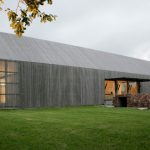
Energy efficiency has become one of the most popular factors to consider.
From wood to uPVC windows, there is an enormous number of window styles to choose from. While this means that there is a virtually unlimited number of ways to personalize your home, it also means that making a decision can be quite difficult. The following guide will help you narrow down your options to ensure that you are making the right decision.
Today, energy efficiency has become one of the most popular factors to consider. Most manufacturers have realized just how popular this trend has become, which proves beneficial both for the environment and consumers. Energy bill savings in addition to tax benefits have made this an important issue. Not all windows boasting energy efficiency are being entirely honest, however, so it is a good idea to check for the Energy Star label.
When it comes to pricing, your options can vary quite a bit. A relatively basic 3×4 foot window with decent energy efficiency will cost between one and two hundred dollars. If you upgrade to fiberglass frames and an argon filled window, the cost will double to about four hundred dollars. A fully customized window of the same size can cost as much as eight hundred.
As far as materials go, vinyl is currently the most popular, making up about two-thirds of the industry. They are typically chosen because they are both cost-effective and energy efficient, as well as durable. Fairly lightweight, they are also easy to install. Some people consider them to be less attractive than other options. Experts are mixed on whether or not the material can be painted.
While fiberglass is not nearly as popular, it is quickly gaining a fair amount of attention. It is extremely durable, requires very little maintenance, and it is priced in the mid-range. The material is stronger than vinyl, and less likely to warp, crack, or chip over time. Unlike vinyl, they can be painted, offering more customization. They can also be finished with wood for a more natural appearance.
While aluminum appears to be losing popularity, it still offers benefits that other materials can’t beat. For one, it is very strong and lightweight, meaning that thinner frames and additional window space are possible. Architects are very fond of the material for this reason. It can be combined with other materials during the production process in order to produce a wide variety of colors. Unfortunately, it is less energy efficient, and its tendency to contract in the cold can put stress on the window enclosure.
Finally, traditional wood windows offer class that other options can’t compete with. It’s natural appearance gives a home warmth that other options can’t provide. It is a good insulator, and it can be combined with modern weather stripping for increased energy efficiency. On the downside, wood is more susceptible to damage from the weather and sun than other options.
Ultimately, there is no universal option that is perfect for everybody. The ideal material that you choose for your window will depend on your taste, budget, and goals. The information above, combined with strategic and thorough shopping, will allow you to find the window with the perfect balance of cost, energy efficiency, at appearance.
















